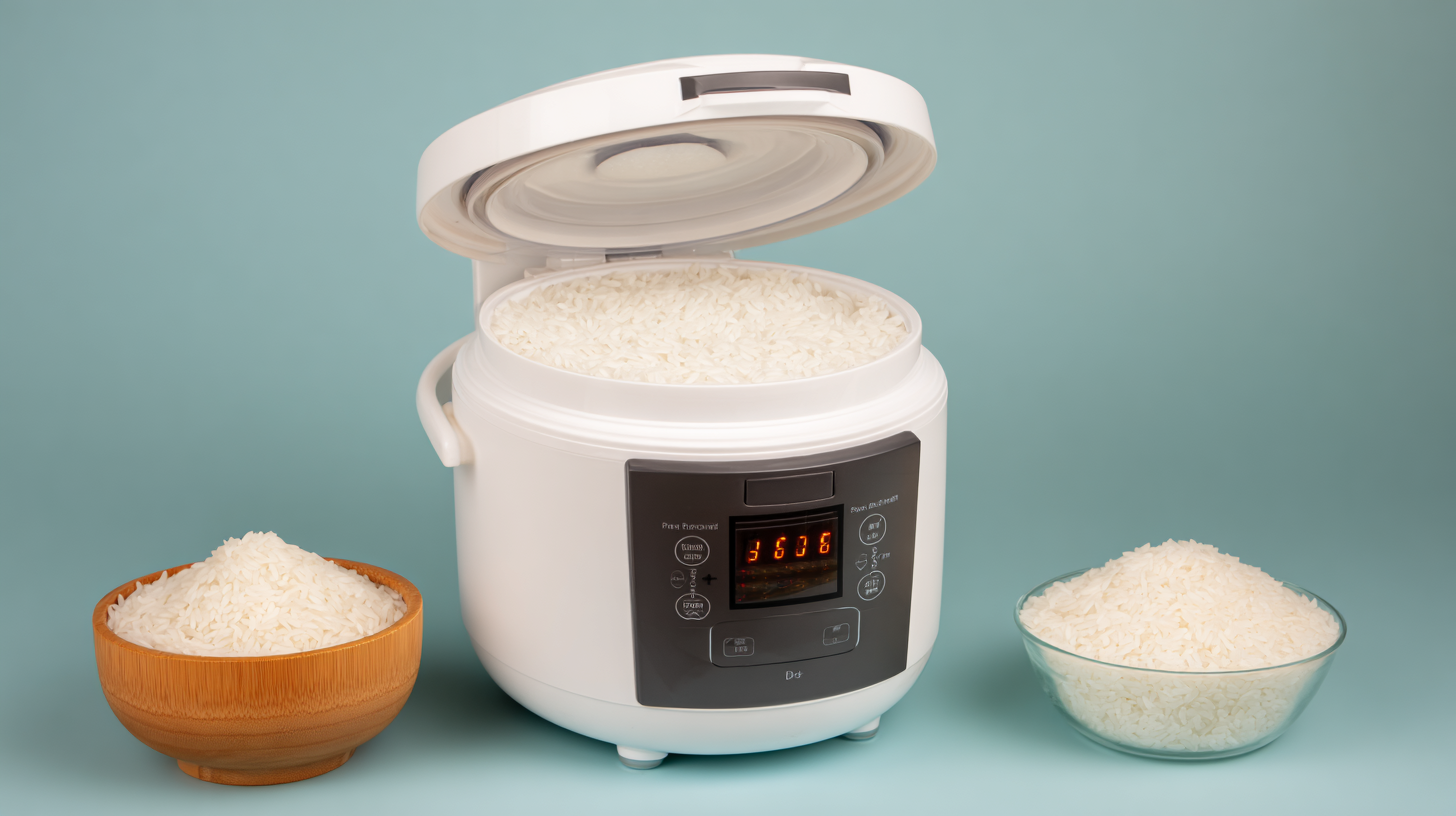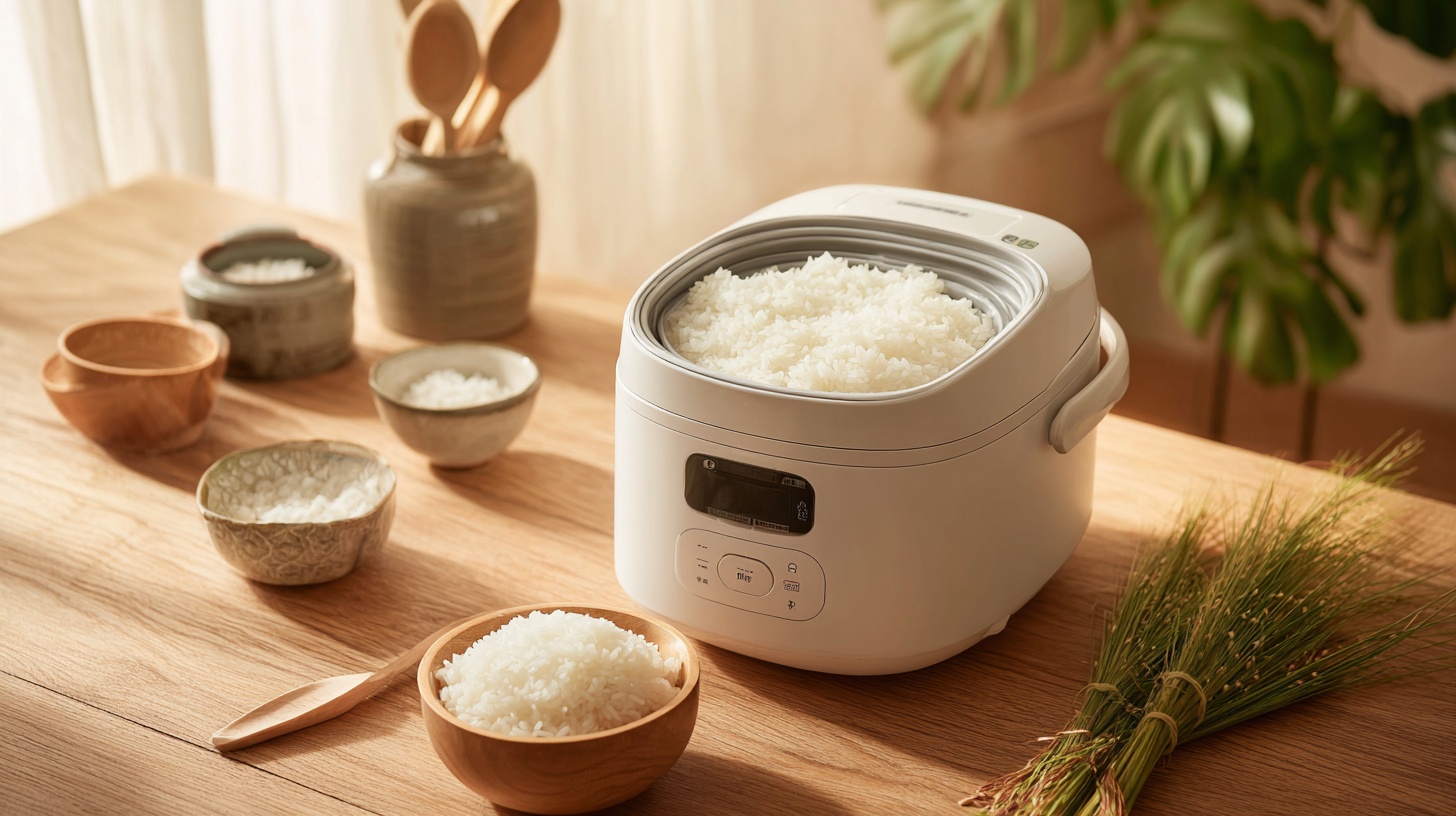- +86-13631182173
- sales@zsqeelin.com
- 8613631182173
As we approach 2025, the global market for kitchen appliances, particularly the Electric Rice Cooking Machine, is set to experience significant transformations driven by technological innovations and changing consumer preferences. According to a recent report by Grand View Research, the electric rice cooker market was valued at approximately USD 1.2 billion in 2020 and is projected to expand at a compound annual growth rate (CAGR) of about 5% through 2027. This growth is fueled by the increasing popularity of Asian cuisines worldwide, coupled with the rising demand for convenient and efficient cooking solutions. Furthermore, advancements in smart technology, such as IoT integration and energy-efficient features, are making the Electric Rice Cooking Machine more appealing to modern consumers. As businesses strategize their entry into this competitive landscape, understanding market trends, consumer behavior, and technological developments will be crucial in selecting and developing the best electric rice cooking machines for diverse global markets.

The rise of smart electric rice cookers is significantly shaping market trends and consumer demands within the kitchen appliances sector. As technology continues to advance, consumers increasingly prefer kitchen tools that not only streamline cooking processes but also integrate seamlessly with other smart devices. This preference exemplifies a shift towards efficiency and connectivity, which is becoming vital in modern households. With the global electric rice cooker market projected to grow substantially from 2025 to 2032, manufacturers are tasked with creating innovative products that meet these evolving consumer expectations.
Moreover, the preferences for smart kitchen appliances indicate a broader trend where convenience and multifunctionality become key selling points. As consumers engage with products that enhance their culinary experience and simplify meal preparation, brands that can provide advanced features, such as app connectivity and programmable cooking options, are likely to capture greater market share. This evolution not only highlights the growing intersection of technology and everyday cooking but also underscores the potential for innovation within the kitchen appliance industry to meet the diverse needs of global consumers.
| Feature | Description | Consumer Demand Level | Market Trends |
|---|---|---|---|
| Smart Technology | Integration with mobile apps for remote control. | High | Growing preference for smart home appliances. |
| Capacity | Variety of sizes catering to different family needs. | Medium | Trend toward bigger capacities for larger families. |
| Energy Efficiency | Lower electricity consumption with advanced insulation. | High | Increase in environmentally conscious consumers. |
| Multi-Functionality | Ability to steam, slow cook, and bake. | High | Consumers favor versatile kitchen appliances. |
| User-Friendly Interface | Intuitive controls and clear display for easy operation. | Medium | Demand for ease of use among older consumers. |
When considering an electric rice cooker for global markets in 2025, the performance-to-price ratio is essential. According to a recent report by Grand View Research, the global electric rice cooker market is projected to reach $3.5 billion by 2027, with a significant focus on product efficiency and user convenience. Consumers increasingly prioritize features such as cooking speed, energy consumption, and versatility, as they influence not only the final rice quality but also long-term operational costs.

Key features to consider include advanced temperature control, smart cooking modes, and energy efficiency ratings. For instance, cookers with induction heating technology can cook rice faster and more uniformly than traditional models, appealing to the growing consumer base that values both quality and efficiency. Research indicates that models featuring these advanced technologies see a 20-30% increase in market preference, despite being priced at a premium. This reflects a shift in consumer attitudes, with performance now often outweighing initial costs in purchase decisions.
As the demand for electric rice cooking machines continues to soar, manufacturers are increasingly focusing on sustainable practices and eco-friendly materials. According to a recent report by the International Energy Agency, the global market for electric cooking appliances is expected to grow by 14% annually over the next five years. This surge presents an opportunity for brands to adopt sustainable manufacturing practices, including the use of recycled plastics and biodegradable components. By prioritizing eco-friendly materials, manufacturers can reduce their carbon footprint while catering to environmentally conscious consumers.
When selecting an electric rice cooking machine, consider machines made from materials such as bamboo and recycled stainless steel, which are not only durable but also have a lower environmental impact compared to conventional plastics. Additionally, opt for models that incorporate energy-efficient features, contributing to reduced electricity consumption and promoting sustainability.
Tips for Choosing an Eco-Friendly Rice Cooker:
The global market for electric rice cookers is projected to witness significant growth in the coming years, driven by rising consumer demand for convenience and the increasing popularity of Asian cuisines across diverse regions. According to a recent report by Market Research Future, the electric rice cooker market is expected to grow at a CAGR of approximately 7.5% from 2021 to 2026. This growth can be attributed to the expanding presence of manufacturers in emerging markets, along with the continued innovation in cooking technology, which enhances the user experience and cooking efficiency.
Moreover, the Asia-Pacific region remains the dominant market, accounting for over 60% of the global share, due to the high consumption of rice in countries like China, India, and Japan. However, North America and Europe are gradually showing an increased interest in electric rice cookers, particularly among households that prioritize culinary versatility and health-conscious cooking. Additionally, the introduction of smart rice cookers with IoT capabilities is expected to inspire further adoption, as consumers look for smarter kitchen solutions. As the market evolves, manufacturers must align their product offerings with these trends to capture emerging growth opportunities effectively.
As we venture into 2025, the integration of the Internet of Things (IoT) in cooking technology is transforming the user experience in electric rice cooking machines. These innovative appliances are no longer just simple kitchen tools; they are connected devices that allow users to cook rice with unprecedented convenience and precision. With smartphone applications, users can monitor their cooking process from a distance, adjust settings, and receive notifications when their rice is ready, effectively blending technology with the art of cooking.
Moreover, IoT-enabled rice cookers come equipped with advanced features like recipe suggestions, cooking timers, and even personal preferences learning algorithms. These machines can adapt to different types of rice and cooking styles, ensuring perfectly cooked rice every time. Furthermore, cloud connectivity allows manufacturers to push updates and enhancements, continuously improving the product's functionality and user interface. This evolution in cooking technology not only caters to the modern consumer's desire for convenience but also elevates the overall culinary experience.
Embracing these innovations is essential for businesses looking to thrive in global markets, providing a competitive edge in an increasingly tech-savvy world.

